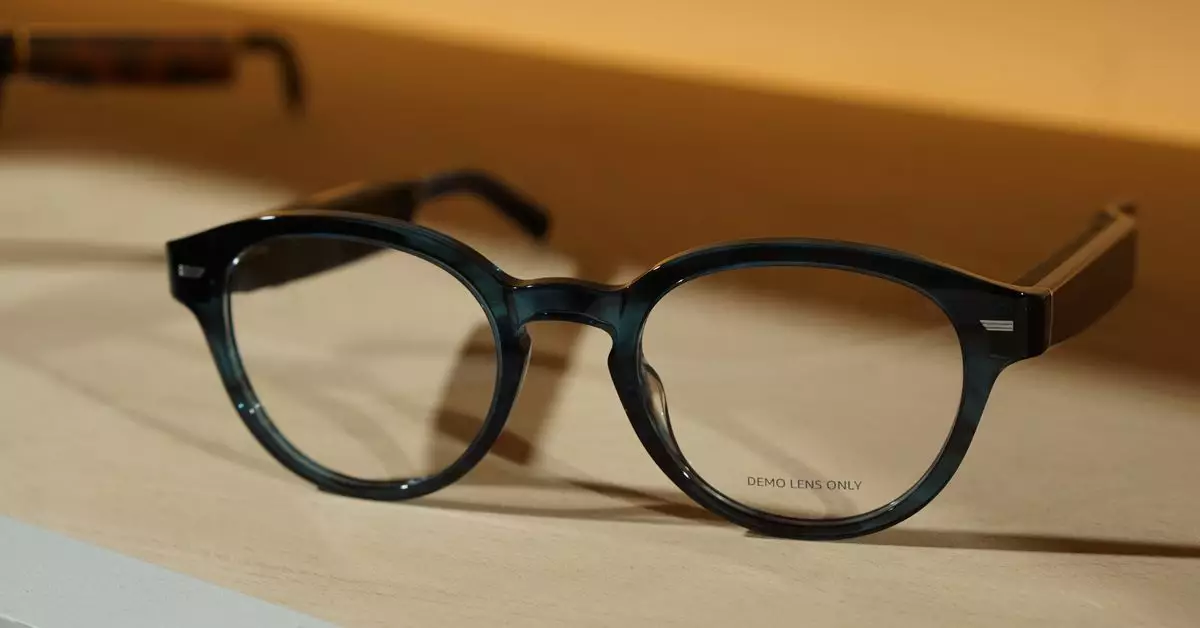In the rapidly evolving landscape of technology, Amazon is making a compelling case for integrating smart glasses into its logistics operations. Codenamed “Amelia,” these innovative glasses aim to transform the way delivery drivers navigate their routes by providing hands-free, turn-by-turn navigation. This endeavor represents a significant step beyond the current offerings of the Echo Frames, shifting from audio feedback to incorporating a visual display that could streamline the last stages of delivery — often the most time-consuming elements of the process.
The primary goal of Amazon’s smart glasses development is to enhance delivery efficiency, especially in the crucial last 100 yards. By equipping drivers with an embedded display, they can receive more accurate navigational cues directly in their line of sight, such as specific directions when making turns or exiting buildings. This innovation promises to minimize time spent on each delivery, thereby maximizing the number of packages completed per shift.
In addition to just navigation, the glasses may feature camera capabilities, enabling drivers to document deliveries through photographs, offering proof of successful package delivery. The hands-free aspect of these glasses would not only facilitate multi-tasking but would also optimize physical space, allowing drivers to carry a greater number of packages without the need for additional handling.
Despite the promising benefits, developing smart glasses that are both functional and practical poses significant engineering challenges. One of the biggest hurdles Amazon faces is achieving a battery life that will sustain an eight-hour shift while ensuring the glasses remain lightweight and comfortable for daily use. Current prototypes must strike a delicate balance between durability and wearability, an endeavor that previous companies venturing into smart glasses have often struggled with.
An additional layer of complexity arises from the fact that a significant portion of the population relies on corrective lenses. Many smart glasses available on the market today do not accommodate all types of prescriptions, posing a challenge for Amazon to develop a solution that meets the needs of all potential users. Ensuring widespread adaptability could be key to the broad acceptance of the glasses among Amazon’s diverse delivery workforce.
A further obstacle lies in getting Amazon drivers, many of whom are third-party contractors, on board with using this new technology. The enthusiasm for such innovations can vary significantly across a workforce, making it crucial for Amazon to present a compelling case for the benefits of smart glasses. Training and familiarization will also play a significant role in their potential adoption. Drivers must feel confident and comfortable utilizing this technology before it can be fully integrated into their daily routines.
Moreover, as Amazon moves forward with this initiative, it will need to gather considerable data for optimal navigation within the last 100 yards of delivery points. This includes understanding building layouts, street configurations, and even environmental factors that may impede delivery. Such research will require time and investment, complicating the timeline for widespread implementation of the smart glasses.
Amazon’s pivot towards enterprise solutions is not without historical context; several previous attempts by various companies to launch smart glasses have met with lukewarm receptions. For example, the past performance of devices like Google Glass and Microsoft HoloLens highlights the challenges many have faced in finding a sustainable consumer base. Early indicators suggest that Amazon may be learning from the missteps of others; the last generation of Echo Frames reportedly sold fewer than 10,000 units, which indicates limited consumer interest.
Given the recent success of products like Ray-Ban Meta glasses, it is evident that market acceptance of smart glasses can vary widely. Transitioning focus to enterprise applications may afford Amazon a more solid foundation to develop tech solutions that have real-world utility affecting their bottom line.
As Amazon forges ahead with the development of smart glasses for its delivery drivers, the company stands at the intersection of opportunity and challenge. While significant hurdles need to be addressed, the potential impact on efficiency within their logistics operations could be transformative. If successful, Amazon’s venture could pave the way for broader enterprise adoption and even consumer acceptance in the future, unlocking new possibilities in the realm of wearable technology. Time will tell if “Amelia” becomes an integral tool for Amazon’s drivers or merely a vision of what could have been.


Leave a Reply